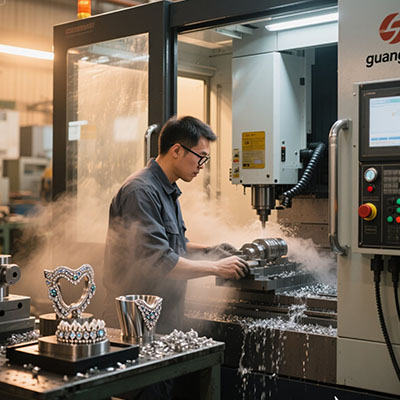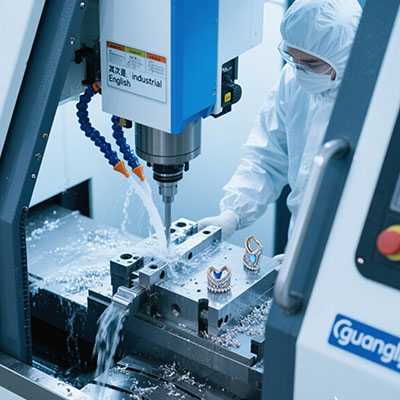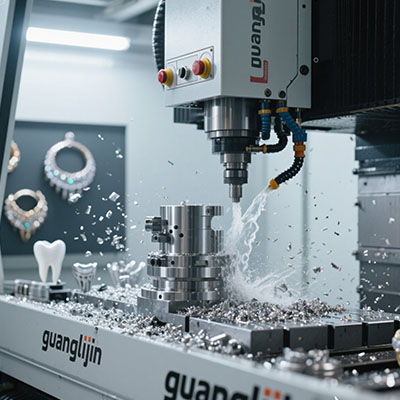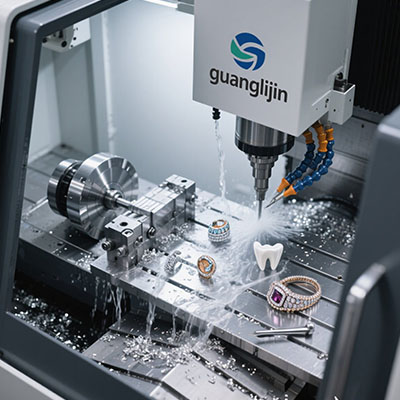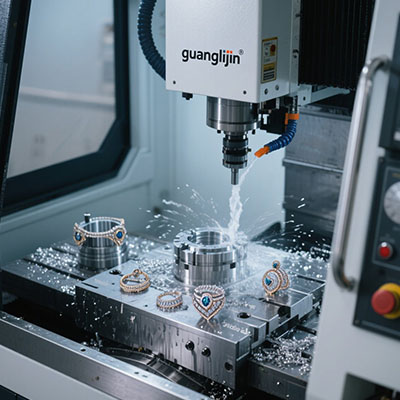Precision CNC Polishers for Jewellery Makers: Mastering the Art of Perfect Finishes
The Precision Challenge in Modern Jewellery Making
Today’s jewellery market demands flawless finishes. Consumers expect perfect surfaces and consistent quality. Hand polishing struggles with complex designs and production volumes. Even skilled artisans produce variable results. How can jewellers maintain excellence while increasing output?
Understanding Precision CNC Polishing Technology
Precision CNC polishers represent the pinnacle of jewellery finishing technology. These computer-controlled systems replicate expert techniques with perfect consistency. They maintain exact angles, pressures, and speeds throughout operations. Multi-axis capabilities handle intricate designs effortlessly.
Essentially, they transform artistic polishing into a repeatable science. This technology preserves delicate details while ensuring uniform finishes across production runs.
Why Precision Matters in Jewellery Production
Superior finishing separates exceptional jewellery from ordinary pieces. Precision systems eliminate human variability in the polishing process. They maintain exact parameters throughout extended operations. This consistency protects delicate features and sharp edges.
Interestingly, a 2023 Goldsmithing Technology Review found that precision polishing reduces material waste by 27% compared to manual methods. That’s significant savings for precious metals!
Furthermore, these systems enhance productivity dramatically. They work continuously without fatigue or inconsistency. This allows workshops to meet tight deadlines while maintaining quality standards.
Traditional vs. Precision Polishing: Key Differences
Understanding both approaches helps informed decisions. Traditional polishing relies entirely on artisan skill and experience. It excels for unique, custom creations requiring artistic judgment. Precision systems shine in production environments demanding consistency.
| Aspect | Traditional Polishing | Precision CNC Polishing |
|---|---|---|
| Consistency | Variable (artist-dependent) | Exceptional (program-controlled) |
| Training Time | Extensive (6-24 months) | Moderate (2-4 weeks) |
| Output Speed | Moderate (experience-dependent) | High (2-4x faster) |
| Complex Geometries | Challenging and time-consuming | Excellent handling and efficiency |
| Initial Investment | Lower equipment cost | Higher equipment cost |
| Long-term Value | Higher per-piece cost | Lower per-piece cost |
For most commercial applications, precision systems provide superior return on investment. They pay for themselves through reduced waste, increased throughput, and consistent quality.
Essential Features of Precision Polishing Systems
Understanding system components aids selection decisions. The core is the precision motion control system with multi-axis capabilities. Digital interfaces manage complex programming and recipe storage. Adaptive pressure systems maintain consistent application across variations.
Advanced features enhance capabilities significantly. Vision systems automate quality inspection and adjustment. Automated compound management ensures perfect application. Temperature control prevents material damage during extended operations.
Selecting the Right Precision Polishing Equipment
Choosing appropriate equipment requires careful evaluation. First, analyze your primary materials and their hardness characteristics. Precious metals demand different treatment than alternative materials. Second, consider production volume and piece complexity.
Also, evaluate available space, power requirements, and ventilation needs. Don’t forget about technical support and training availability. Ensure the manufacturer provides comprehensive service and maintenance options.
Finally, consider future expansion needs and technological compatibility. Select systems that can grow with your business and integrate with other production equipment.
Step-by-Step Precision Polishing Procedure
Proper technique maximizes results and equipment longevity. Follow these steps for optimal performance:
Step 1: System Preparation and Calibration
Clean all polishing wheels and work surfaces thoroughly. Verify machine calibration against manufacturer specifications. Precision begins with proper setup!
Step 2: Workpiece Fixturing and Alignment
Secure jewellery pieces in specialized holders designed for your specific items. Ensure perfect alignment without stressing delicate components.
Step 3: Program Selection and Customization
Load appropriate polishing program for your material and desired finish. Modern jewellery polishing machine units store hundreds of recipes for different applications.
Step 4: Compound Selection and Application
Choose specialized compounds based on material and finish requirements. Apply with precision dispensers for consistent coverage and minimal waste.
Step 5: Cycle Initiation and Monitoring
Start polishing cycle while monitoring initial results through viewing systems. Make micro-adjustments if necessary based on real-time feedback.
Step 6: Final Inspection and Cleaning
Remove polished pieces for thorough inspection under magnification. Clean with appropriate solutions to remove all compound residues completely.
Common Precision Polishing Mistakes
⚠Attention: Avoid incorrect program selection for materials. Using aggressive programs on soft metals causes excessive material removal and detail loss.
⚠Attention: Never neglect temperature monitoring. According to Precision Manufacturing Studies, over 40% of thermal damage occurs during extended polishing cycles without proper cooling.
⚠Attention: Don’t underestimate the importance of regular calibration. Precision systems require frequent verification to maintain micron-level accuracy in finishing operations.
Real-World Implementation: A Case Study
Our team implemented a precision CNC system for a specialty manufacturer in early 2024. They struggled with finishing consistency across their signature textured collections. We installed a advanced jewellery polishing machine with customized programming. The transformation was remarkable. Their finishing rejection rate dropped from 22% to under 3% within weeks. Additionally, their production capacity increased by 52% without quality compromise. This experience demonstrated how precision technology can transform challenging finishing operations.
Maintaining Your Precision Polishing System
Regular maintenance ensures peak performance and investment protection. Daily cleaning prevents compound contamination between operations. Weekly inspections verify mechanical alignment and system integrity. Monthly servicing should include software updates and calibration verification. Annual professional servicing identifies developing issues before they affect quality.
Maintain detailed service records and performance logs. This data helps optimize operations and predict maintenance needs. Well-maintained precision equipment delivers consistent results for decades.
Conclusion: The Future of Jewellery Finishing
Precision CNC polishing systems represent the undeniable future of jewellery manufacturing. They perfectly bridge traditional craftsmanship with modern technology. While requiring significant investment, they deliver unmatched consistency, efficiency, and quality control. Workshops adopting this technology gain substantial competitive advantages through superior products and reduced production costs.
Daily Operation Checklist
- Verify clean work environment and equipment surfaces
- Inspect polishing wheels for wear and damage
- Confirm proper compound selection and availability
- Test all safety systems and emergency stops
- Check dust extraction and ventilation operation
- Review and select appropriate polishing programs
- Ensure adequate lighting and magnification for inspection
- Verify calibration status and accuracy measurements
Frequently Asked Questions
What is the best precision jewellery polishing machine for small studios?
For small studios, compact CNC jewellery polishing machines with 3-4 axis capabilities offer the ideal balance of precision, affordability, and space efficiency for professional results.
How much does a high-precision jewellery polishing system cost?
High-precision jewellery polishing systems typically range from $12,000 to $35,000 depending on automation level, axis count, and special features for specific applications.
Can precision polishers handle antique jewellery restoration without damage?
Yes, modern precision jewellery polishing machines with micro-adjustment capabilities can expertly restore antique jewellery without damaging delicate details or reducing historical value.
What maintenance does a precision jewellery polisher require?
Precision jewellery polishers need regular calibration, lubrication of precision components, software updates, and occasional part replacement to maintain micron-level accuracy.
How long does it take to program a CNC jewellery polishing machine?
Basic programming for a CNC jewellery polishing machine takes 2-3 hours, while mastering complex patterns and custom routines may require 20-30 hours of training and practice.
